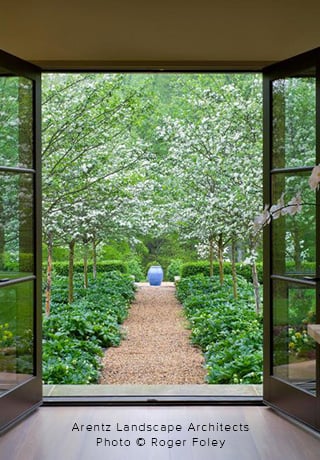2026 Trends in Garden Design
We share 8 gardening trends on the rise in 2026Now, more than ever, our gardens are a place of balance—where people, plants, and the environment come together. This year’s trends weave together evolving design aesthetics with a continued awareness of ecological concerns, giving rise to gardens that are not only beautiful but also innovative, resilient, and deeply personal.
At the heart of it all is working with nature, not against it. And in doing so, our gardens will reflect our style, values, and the deeper connections we share with the world around us.
1. Keystone Plantings: Refining Pollinator Gardens with High-Impact Plants
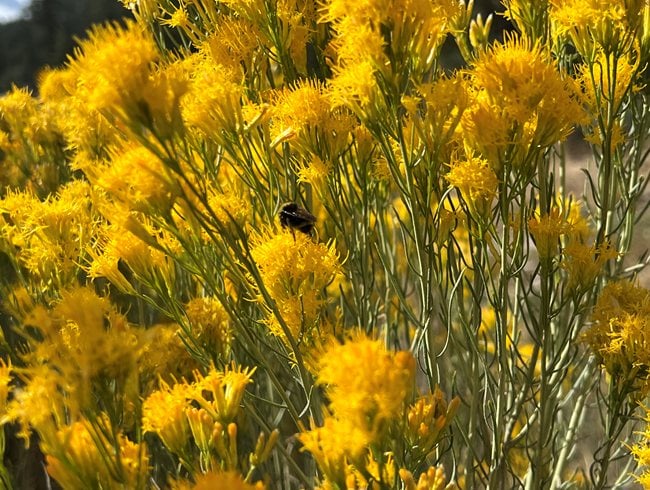
Yellow rabbitbrush (Chrysothamnus viscidiflorus) is a keystone perennial that thrives in some of Western North America’s harshest, driest environments, thanks to its extensive roots and soil adaptability. Just as impressive, it provides year-round resources for a huge range of wildlife species, making it as vital as it is resilient. Photo by: Rebecca Sweet.
As gardeners continue to embrace native plants like never before, many are taking the next step by focusing on incorporating more keystone plants—native plants that play an especially important role in supporting wildlife and keeping ecosystems healthy.
Under the broad “native plant” umbrella, keystone species—whether trees, shrubs, perennials, or wildflowers—are the heavy lifters, helping to maintain the diversity and stability of entire ecosystems. Keystone plants aren’t always the most prevalent of native plants, but their presence has a much greater impact on the local food web.
Consider this: research by entomologist Dr. Doug Tallamy found that just 14% of native plants (the keystone ‘superstars’) support an astonishing 90% of butterfly and moth species.
Examples of top keystone plants include oak, willow, or birch trees; shrubs like elderberries (Sambucus), spicebush (Lindera benzoin), and wild lilac (Ceanothus spp.); and perennials that include goldenrods (Solidago), native asters, milkweed (Asclepias spp.), and wild sunflowers (Helianthus).
As you look for more native plants to incorporate into your garden, refer to sites such as Homegrown National Park to help identify what keystone plants are local to your region. Incorporating keystone plants in our gardens is one of the most impactful decisions a gardener can make.
2. Light Pollution: An Ecological Design Concern
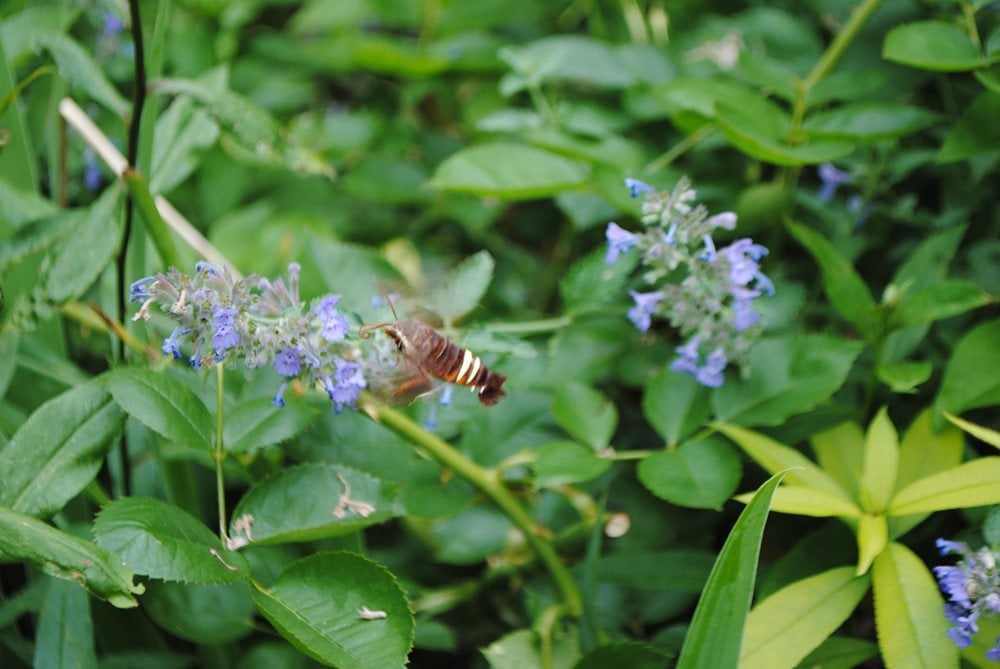
The Nessus sphinx moth (Amphion floridensis) is an important pollinator and one that’s most active at dusk, making it especially vulnerable to the detrimental effects of excessive outdoor lighting. Photo by: Rebecca Sweet.
Another way we can support wildlife in our gardens is by paying closer attention to light pollution. While once seen as only a big-city concern, we now realize that artificial light can be just as disruptive in suburban gardens, no matter their size. For instance, a porch light left on all night can interfere with bird migration and confuse the bats, amphibians, and nocturnal pollinators that rely on darkness to forage.
And it’s not just wildlife that feels the effects. Recent research also shows that artificial light disrupts the circadian rhythms of all living things, including plants, by shifting the timing of leaf budding and leaf drop in trees, and even throwing off flowering cycles in our ornamental favorites.
The good news? According to Dark Sky.org, gardeners can help reduce light pollution through simple changes, like using shielded, downward-facing fixtures placed on a timer or motion sensor, opting for warmer bulbs (2700K or less), and re-thinking whether every light is truly necessary.
After all, it’s not just about what we plant, it’s also how we care for our gardens after the sun goes down.
3. Maximalist Gardening: Planting What You Love, Abundantly
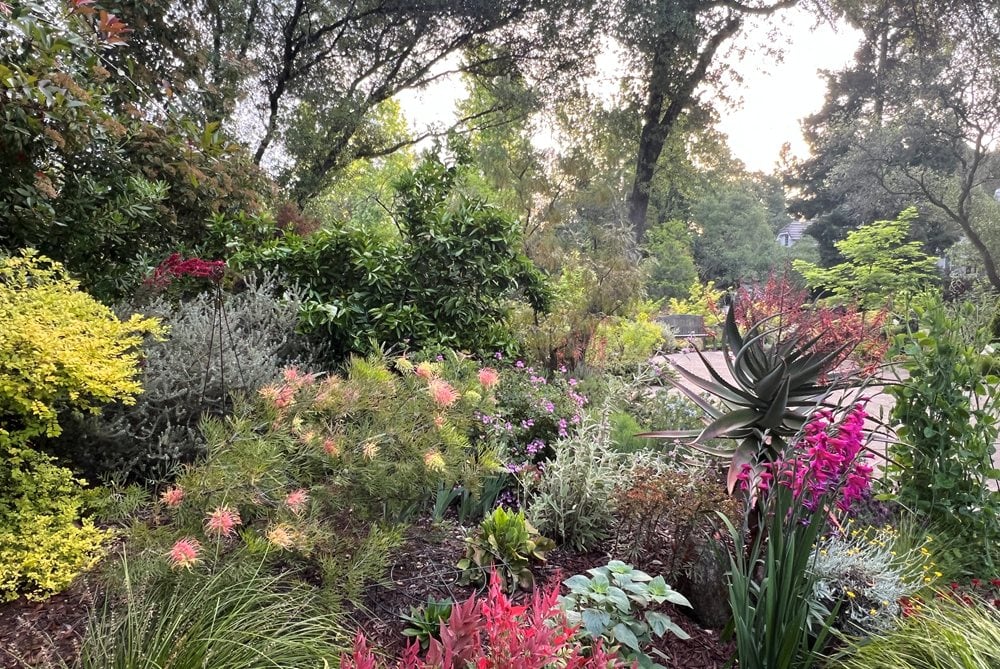
The very definition of ‘maximalist’ gardening, low-water pollinator plants happily mingle with heirloom bulbs, robust succulents, colorful ornamentals, climbing vines, and edibles (thanks to the orange tree and artichoke). Design and photo by: Rebecca Sweet.
In recent years, we’ve enjoyed more flexibility in our daily schedules (thanks to the ability to work at home) which allows us to spend less time commuting and more time in our gardens. And as a result, garden styles have shifted from low-maintenance, simple and streamlined to an abundant, maximalist gardening style.
Maximalism in the garden isn’t about creating a Pinterest-perfect space where all the so-called garden 'rules' are followed. Instead, the focus is on planting what you love, creating a garden that bursts with layers of plants, surprises, personality, and delight, often weaving together categories of plants not always associated with one another, i.e., natives and pollinators combined with edibles and succulents. The overarching goal is simple: more is more. And, if it makes your heart sing, then all the better!
4. Rich, Deep, Jewel-Tone Colors Take Center Stage
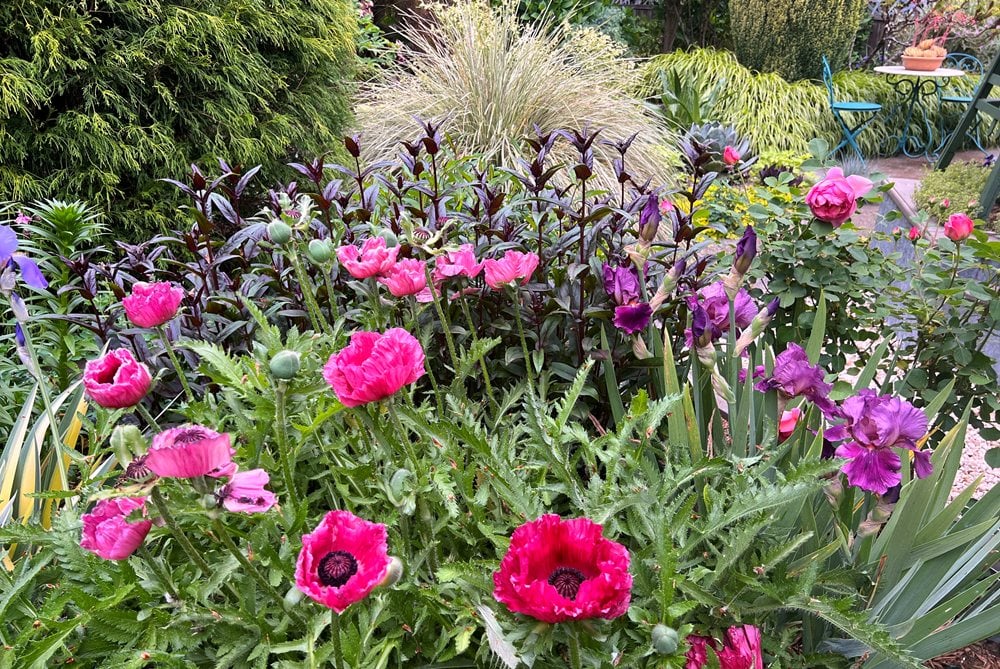
The intense, rich jewel-tone flowers and foliage of Papaver 'Plum Pudding', Iris ‘Rosalie Figge’, and Penstemon 'Dakota Burgundy' stand up to the glaring sun in Freeland and Sabrina Tanner’s Napa garden. Photo by: Rebecca Sweet.
In 2026, jewel tones will take center stage in our gardens, replacing the softer, muted hues of recent years. Just as interior paint companies are leaning into saturated shades (i.e., Behr's teal-green Hidden Gem or Glidden's Warm Mahogany), plant breeders are also introducing flowers and foliage in shades of fiery reds, velvety plums, rich burgundies, and emerald greens.
Shrubs and perennials such as Proven Winners' ‘Red Zeppelin’ sweetshrub (Calycanthus floridus), Dolce® 'Sultry Night' heuchera or Kodiak® Jet Black diervilla, are just a few of the many new introductions for 2026 that add a sophisticated richness and drama to the garden. But beyond their bold beauty, jewel tones also serve a practical purpose. Unlike pastels, which tend to appear 'washed out' in the glare of summer sun, rich colors hold their ground, glowing with intensity and adding lasting drama to the garden.
5. Continued Firescaping Awareness: Merging Beauty with Resilience
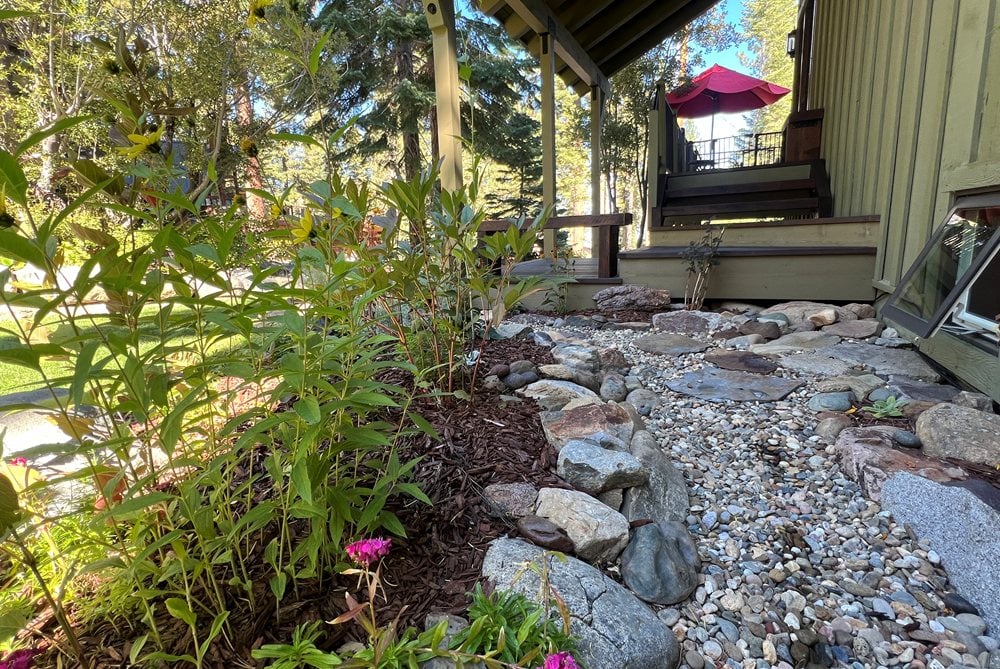
Establishing a plant-free defensible zone around the perimeter of your home is just one of many ways to reduce wildfire risk. In this garden, the homeowner used a variety of decorative stones to create visual interest, helping the area to blend beautifully with the surrounding landscape. The Anderson Garden. Photo by: Rebecca Sweet.
Alongside aesthetic shifts in 2026, there’s another trend continuing to gain momentum, one rooted in practicality and resilience. As wildfire seasons become longer and more intense across the country, homeowners are rethinking their gardens through the lens of preparedness rather than solely aesthetics. This involves selecting plants that are less flammable, creating defensible zones around their properties, managing mulch and debris, and prioritizing landscape layout in high-risk areas.
By incorporating design principles that merge beauty with resilience, gardeners are transforming their landscapes into protective buffers without compromising on style. Patios, pathways, and layered planting zones are being redesigned to include functional elements that not only look appealing but also provide protection against fire. The result? Gardens that are both protective and visually pleasing. Safety and style are no longer in conflict; rather, they are collaborating to shape the gardens of tomorrow.
6. Climate-Resilient Edible Crops: Survival, Sustenance, and Beauty
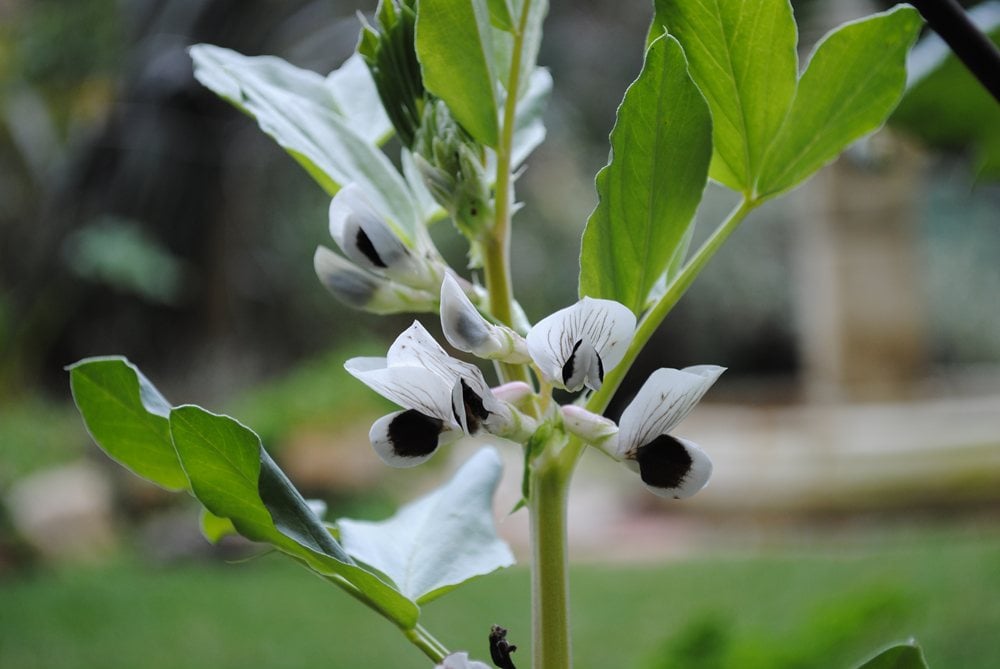
Climate-resilient and hard-working fava beans not only have beautiful, uniquely colored blossoms and delicious, nutritious beans, but their roots also help to replenish the soil's nitrogen. Photo by: Rebecca Sweet.
Taking 2024's trend of "Adapting to a Changing Climate" a step further, gardeners are now turning their attention to low-water, heat-tolerant edibles that can thrive even as conditions grow harsher.
A standout example appeared at this year's Chelsea Flower Show with the "Garden of the Future," designed by Mathew Butler and Josh Parker. The garden showcased a range of climate-resilient crops often grown in sub-Saharan Africa and South Asia's tough soils and scorching heat: drought-hardy staples like millet (Sorghum bicolor), chickpeas (Cicer arietinum), sweet potatoes (Ipomoea batatas), fava beans (Vicia faba), pigeon peas (Cajanus cajan), and black-eyed peas (Vigna unguiculata).
For home gardeners, experimenting with these tough, low-water plants offers a way to grow food that can withstand hotter, drier summers while adding an unexpected and rewarding twist to the edible garden, reminding us that the gardens of tomorrow are as much about survival—and sustenance—as they are about beauty.
7. Green-Drenched Gardens: Turning Chaos into Refuge
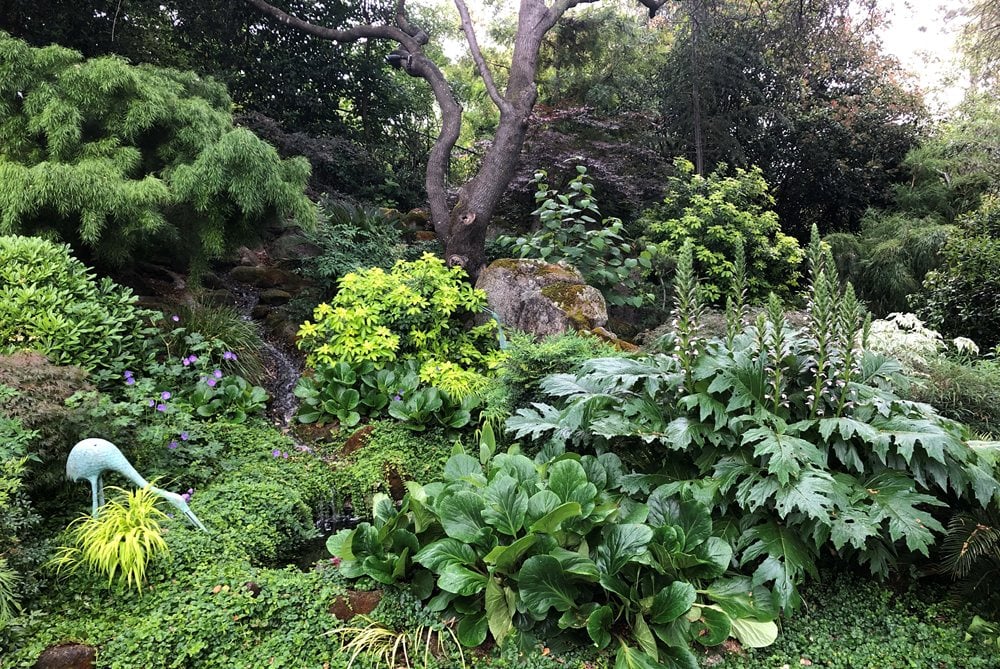
The Andrews’ garden is a study in green—lush layers of foliage, from glossy, textural leaves to cascading airy fronds, play against one another in a symphony of contrast. It’s a place where intrigue and tranquility exist in perfect harmony. Photo by: Rebecca Sweet.
In a world that often feels unpredictable, green-drenched gardens are a rising trend among all styles of garden design, from sleek and modern to lush and maximalist. There's something profoundly reassuring about gardens steeped in green, turning a chaotic world into a quiet refuge.
The key to success is incorporating multiple layers of shapes, sizes, and textures, along with various shades of green—think chartreuse, olive, lime, and dark green. Adding contrast among these elements also helps the layers stand out from one another. For example, imagine the chartreuse cascading foliage of the Japanese forest grass (Hakonechloa macra 'All Gold') surrounded by the oversized, oval leaves of the Shadowland® 'Empress Wu' hosta, with an elegant fernleaf fullmoon Japanese maple towering overhead.
8. Garden Assistants: Helpful Guides in the Garden
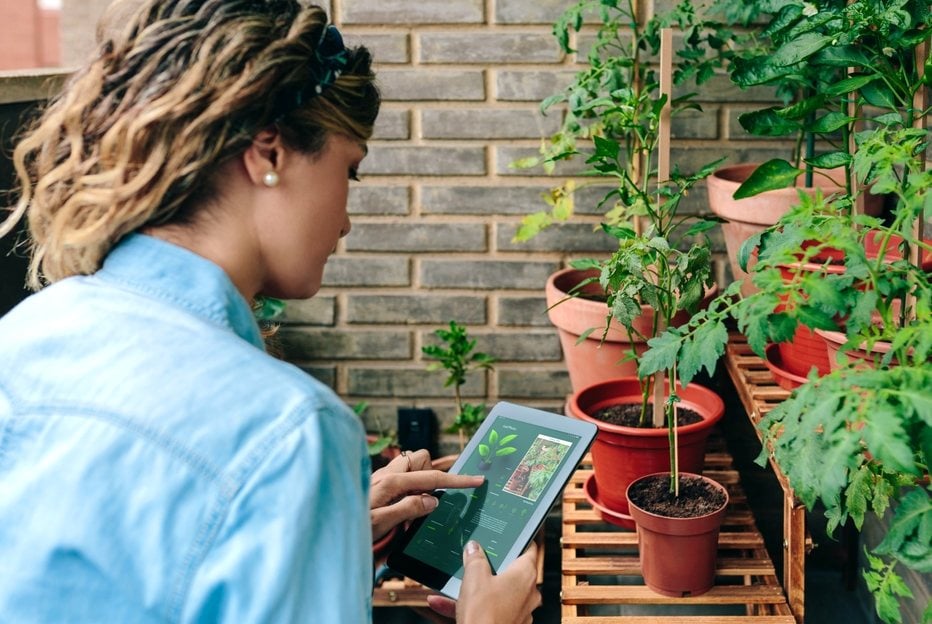
Many garden apps bring expert insight right to your fingertips. Whether helping ID a mystery flower, determining whether a particular bug is friend or foe, or offering a diagnosis for an ailing plant, these apps are quickly becoming an indispensable tool for today’s gardener. Photo by: David Pereiras / Shutterstock
Every year brings another wave of AI-driven garden apps designed to help both budding and experienced gardeners alike. While some gardeners remain hesitant to rely on digital tools, the benefits of these apps are becoming increasingly hard to ignore. One reason is that unlike traditional reference books, these apps are frequently updated and enriched by community contributions, ensuring that the advice reflects the latest scientific research and real-world experiences.
Plant ID apps, such as PlantSnap, PlantNET, and Plant ID, offer quick answers in the field, while disease diagnosis apps help identify and address issues before they escalate. Additionally, wildlife identification apps like Merlin Bird ID (by Cornell Lab), iNaturalist, and Picture Insects aren't just fun to use, they also provide valuable learning opportunities.
BOOK REBECCA AS YOUR NEXT GARDEN SPEAKER!
Fun, passionate, and knowledgeable, three words that describe Rebecca Sweet! See what discussion topics are available and watch a short video as Rebecca explains how her talks will inspire, entertain, and educate gardeners at all skill levels.
RELATED:
Landscape Design: Expert Tips, Styles & Planning Advice
2025 Garden Trends

